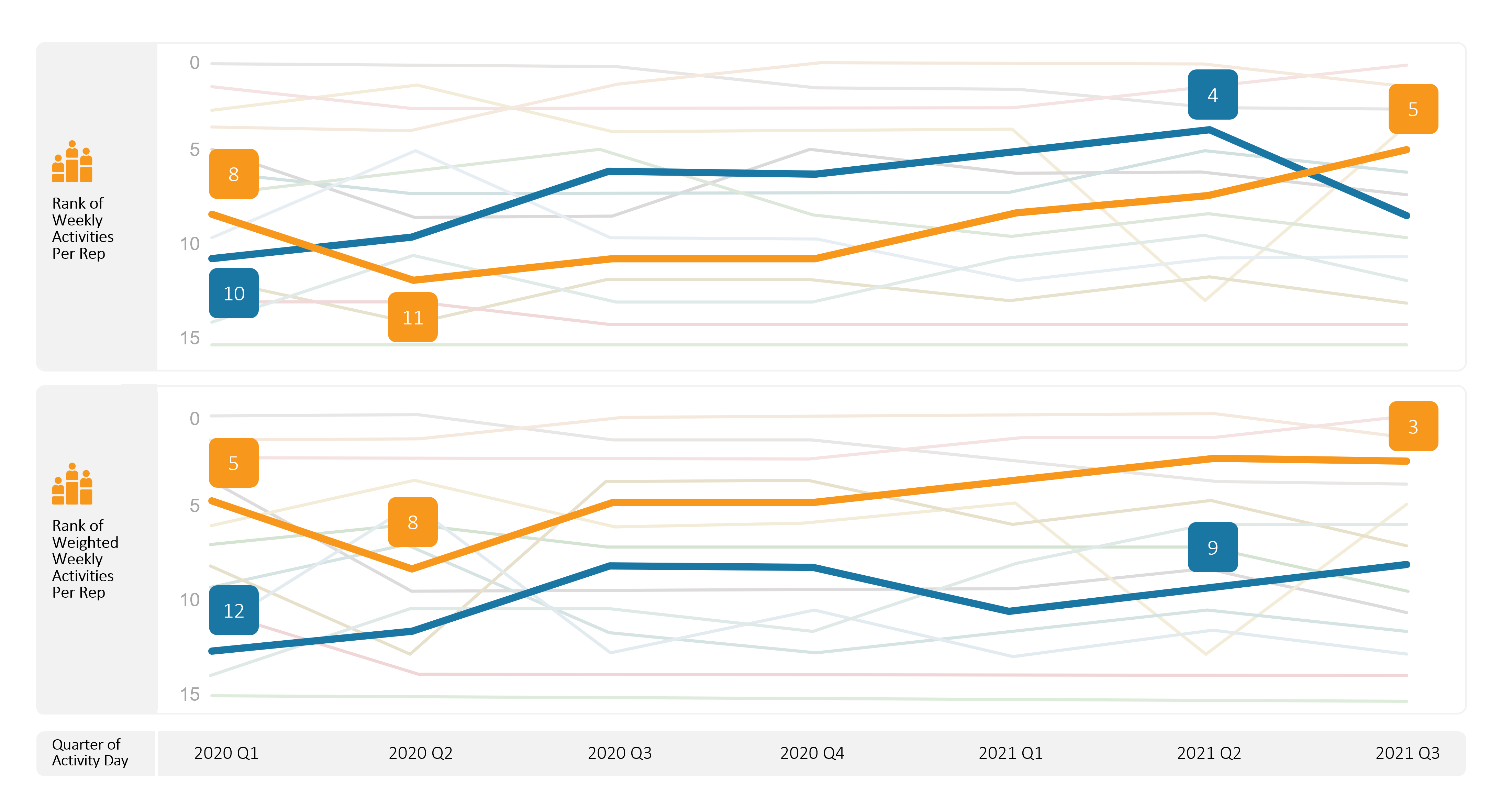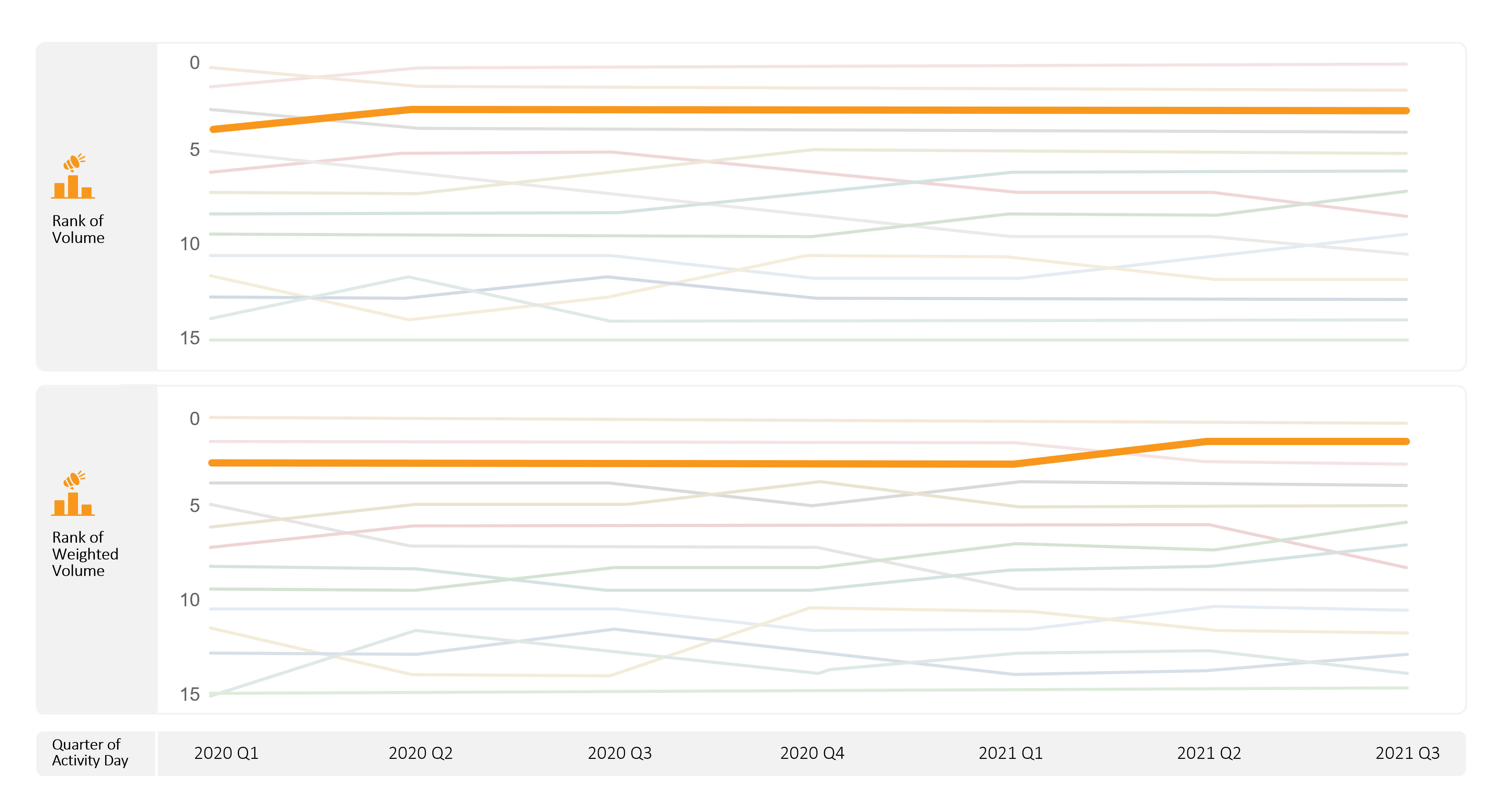How the strategic use of multiple customer engagement channels makes pharma reps more effective
Since the start of COVID-19, pharmaceutical companies across the Asia Pacific life sciences industry have been using all possible channels to reach their customers – unable to continue with only face-to-face interactions. Nearly two years later, we can say that the industry’s digital transformation around customer engagement has reached its peak: few companies are left with one single face-to-face engagement strategy and this is unlikely to change.
In a recent press release, figures from Veeva Pulse data show the continued growth of digital across the APAC life sciences industry. In Q1 2020, life sciences companies held 7,728 remote meetings across APAC. This rose significantly to 332,881 by Q3 2021 as the pandemic continued. In Q4 2021 when some face-to-face interactions returned, the number reduced only to 289,511. These numbers remain high in comparison with initial figures.
An omnichannel engagement approach is key, but not all channels are equal
The most impactful way for pharmas to plan their engagement strategies is using the omnichannel approach. This means using all available channels (omni is a Latin word meaning ‘all’). True omnichannel planning means executing on all channels available to the reps, using a multi-faceted approach to maximise results.
All interactions with healthcare practitioners (HCPs) are valuable, such as a 15-minute detailing session or a simple text message, but not all channels are equal. Meeting an HCP 10 times in their office cannot be the same as meeting them five times and sending them five emails. That is why it is critical to look at each channel and its related effectiveness.
Recognising the relative effectiveness of each channel is key to customer engagement planning and execution. When face-to-face touchpoints are combined with digital strategies, reps can take their engagement to the next level. Having a strategy, system and process in place for the omnichannel approach makes it more impactful and results-driven.
Sales Force Effectiveness (SFE) teams are evolving the way they operate
The omnichannel approach is creating a revolution in the way SFE teams are planning interactions for their field teams. Targeting strategies are evolving and commercial excellence teams are no longer looking at the number of calls needed for a specific segment. Instead, they’re defining an Interaction Equivalent (IE) for each segment.
The IE is the sum of all touchpoints a field representative should have with a customer, weighted according to the channel-related effectiveness.
By assigning relative weight to each channel, companies can empower reps to orchestrate the way they engage their customers across all channels available to them.
The full power of a Multichannel Cycle Plan (MCCP)
To create the most effective strategy for reps to engage with HCPs, not only the number but also the type of interactions must be considered. MCCPs, part of Veeva’s Customer Relationship Management (CRM) tool, enable users to view call goals for each target account, and record progress toward those goals. A MCCP brings activities from multiple CRM areas into one place, and guides users towards the channel activities that will provide the most value according to their targets.
MCCPs allow companies to define the minimum and maximum number of interactions of a specific channel for each target. This enables SFE teams to ensure all targets will be reached with the right effectiveness and the right mix of channels.
MCCPs use an interaction-based calculation approach to illustrate channel progress versus product progress, and the status of specific target customers. Because MCCPs can be used completely offline, end users can view their plans at any time and adapt their schedules to best meet their goals.
Admins and some end users can create MCCPs using dates, channels, product, product weights, and more; managers can track users’ progress, and users can see how far along they are in achieving a goal.
The IE concept means rethinking how we look at a reps’ field productivity
The concept of IE leads us to rethink the way we think about a reps’ productivity in the field as well as share of voice.
To understand the difference between IE and simple volume of interactions, look at the below chart which illustrates the productivity of reps over time among the top 15 pharma companies in APAC. Each line represents one company.
For the following examples we have applied “Channel Effectiveness Weights” as follows:
- Face-to-face calls with eDetail – 1 point
- Face-to-face calls without eDetail – 0.5 points
- Opened Rep-Triggered Emails – 0.25 points
- Remote Meetings – 2 points

If we look at the company in orange, we notice how the productivity of the field seems to be lower than it actually is by looking at the unweighted activities per rep (top chart) vs weighted activities (IE, bottom chart). The company was ranked eighth in APAC in Q1 2020, dropped to 11th in the next quarter and then raised to fifth in Q3 2021; although the IE tells us that the orange company is performing better, from fifth to eighth up to third in the ranking. This is obviously due to a clear strategy of focusing on more effective channels.
On the contrary, the company in blue is better ranked when looking at the unweighted volume of interactions per week (top chart) than they are actually performing (bottom chart). They move from 10th position up to fourth in Q2 2021, a raise that is not confirmed by the IE which in fact shows that the company in blue has stayed outside the top five. This is clearly due to their strategy of engaging with quantity over quality (less-effective channels).
What is interesting is that the share of voice might be also impacted.

If we look at the total volume of interactions over time, we can see the company in orange starting fourth and ending third on the unweighted chart (top chart) while starting third and finishing second on the IE (bottom chart).
Whether companies are using two channels or 10, recognising the intrinsic effectiveness of how they relate customer messages is, and will become, more and more critical to differentiate in the market and ensure life sciences companies are not diluting their promotional efforts.
If you are considering innovating your customer engagement strategy by considering all channels available to your reps, please get in touch with Veeva APAC Business Consulting and we’d be happy to support you.About Veeva
Veeva is a leading provider of cloud solutions and consulting services to the global life sciences industry.